The Ultimate Off-Label Modafinil Guide for Professionals
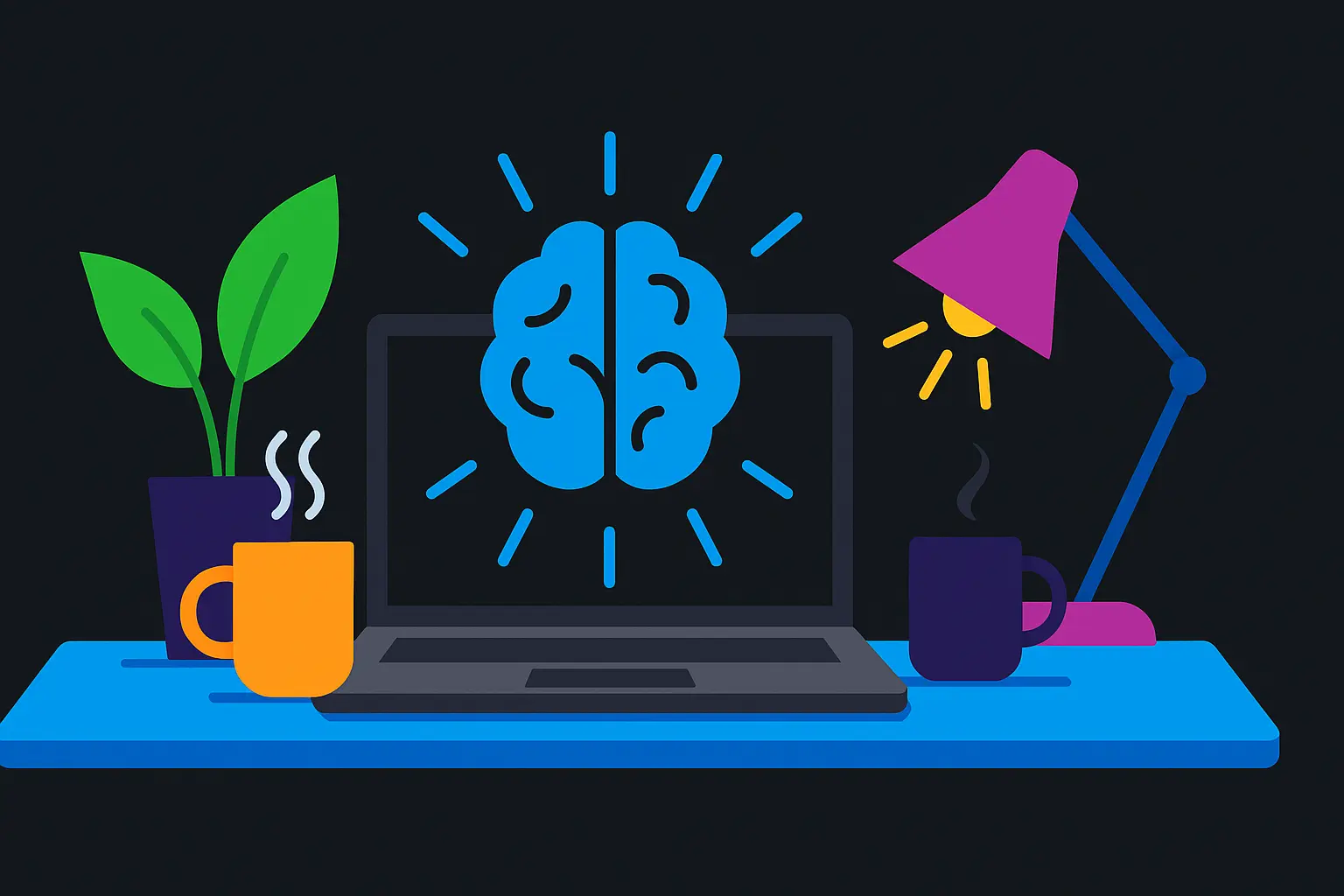
Modafinil has earned a reputation as the go-to "smart drug" for professionals seeking a cognitive edge. Originally developed to treat narcolepsy and other sleep disorders, modafinil is now used off-label by executives, entrepreneurs, competitive grad students, and other driven individuals to promote wakefulness, focus, and prolonged productivity. Unlike jolting caffeine or addictive amphetamines, modafinil offers a smoother boost in alertness that can last all day12. Users often report that it enhances their ability to concentrate on complex tasks without the jittery highs and crashes of other stimulants31. In fact, a systematic review concluded that modafinil "boosts higher-order cognitive function without causing serious side effects."2 For a productivity-obsessed workforce, that promise is hard to ignore.
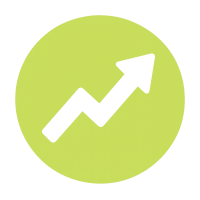 Recent trends:
Recent trends:
The popularity of modafinil as a productivity enhancer has grown worldwide. A 2020 survey of off-prescription users found that 84% took modafinil to improve focus and 78% to "get more done," with the perceived benefits far outweighing the downsides45. During the COVID-19 era, some reports noted a 42% surge in modafinil use in certain groups, attributed to increased online availability and the pressures of remote work67. Online forums and anecdotal accounts further paint modafinil as a mostly positive experience: users describe it as a "subtle but clear" aid to concentration3 and a tool to power through long projects or study sessions. In one informal poll by the BBC, 92% of respondents said they would use cognitive enhancers like modafinil again89. All this has cemented modafinil's place in the toolkit of many high-achievers seeking an extra edge – but it's important to understand how to use it responsibly and effectively. This guide provides a comprehensive, up-to-date look at modafinil use for productivity, from legal status and dosing to stacking, side effects, and comparisons with other enhancers.

How Modafinil Works and Effects on Productivity
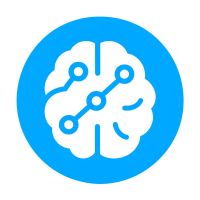 Mechanism of action:
Mechanism of action:
Modafinil is often described as a "wakefulness promoter" or eugeroic rather than a traditional stimulant. It doesn't induce the sudden spike in adrenaline or dopamine that amphetamines do, which is partly why it feels "smoother." Instead, modafinil has a complex mechanism that is not fully understood, but researchers know it increases levels of several neurotransmitters associated with alertness and cognition. In particular, modafinil binds to and inhibits dopamine and norepinephrine transporters (like a mild dopamine reuptake inhibitor), resulting in higher extracellular concentrations of these neurotransmitters27. It also influences other systems – it boosts histamine and orexin (hypocretin) in the hypothalamus (which help keep you awake), and modulates serotonin, glutamate, and GABA levels27. The net effect is a brain that's biochemically encouraged to stay awake, attentive, and engaged.
For the user, the pharmacology translates to very practical benefits:
-
Prolonged Wakefulness: Modafinil essentially tricks your brain into feeling it has had enough rest. People who take it while sleep-deprived remain functionally alert. (Be warned: you are still sleep-deprived, even if you don't feel like it! More on that later.) The military has tested modafinil for keeping pilots and soldiers awake for extended missions; famously, the U.S. Air Force approved it to replace old-school "go pills" (amphetamine) for certain long sorties28.
-
Enhanced Focus and Cognition: Users often report a sharpened ability to concentrate on tasks, especially tedious or complex ones. In studies on healthy adults, modafinil tends to improve attention, vigilance, and decision-making – particularly on difficult or novel tasks229. One review noted modafinil may not make a difference for very simple chores (pressing a button in response to a light, etc.), but for tasks requiring higher cognitive functions (planning, complex problem-solving), those on modafinil performed more accurately than those on placebo30. In everyday terms, that means if you're working on coding a complex program, analyzing data, or writing a lengthy report, modafinil can help you stay mentally present and efficient through it.
-
Motivation and Mood: There is a subjective mood-brightening effect for some people. It's not a euphoric "high," but many describe a subtle increase in motivation and drive. You may find boring tasks more bearable. One user described that on modafinil, even "the boring parts of reverse engineering firmware" became doable with sustained interest3132. Another study even found modafinil users self-reported higher "task enjoyment" and motivation levels33. This likely ties into dopamine effects – by reducing feelings of fatigue and perhaps mildly boosting dopamine, modafinil can make you more eager to work.
-
No "Buzz" – Just Awake: Importantly, modafinil typically won't make you feel wired or hyperactive. Many professionals appreciate that it keeps them feeling normal but not sleepy – often you don't fully realize how focused you are until you notice hours have flown by. As one nootropics enthusiast put it, "modafinil helps in a subtle but clear way"3. There isn't the obvious stimulation or jitteriness you might get from strong coffee or Adderall. It's more like your brain's fog is lifted and you're calmly alert.
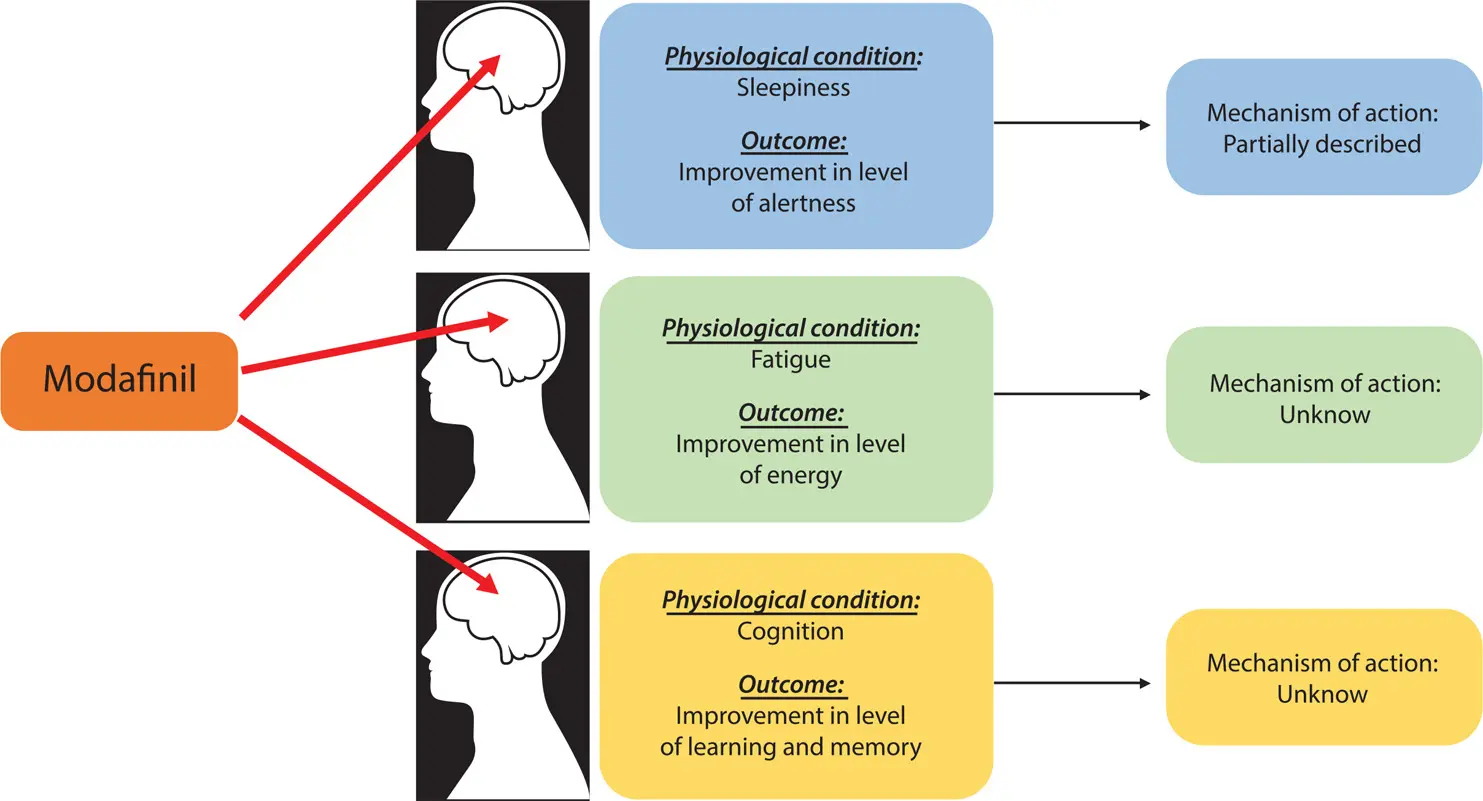
Of course, individual reactions vary. A small percentage of people do report feeling too stimulated or anxious on modafinil (especially at higher doses), but generally it's considered well-tolerated and has a low incidence of significant side effects at standard doses34. We'll cover side effect management shortly. First, let's talk about how to actually use modafinil for optimal results.
Optimal Dosing Strategies
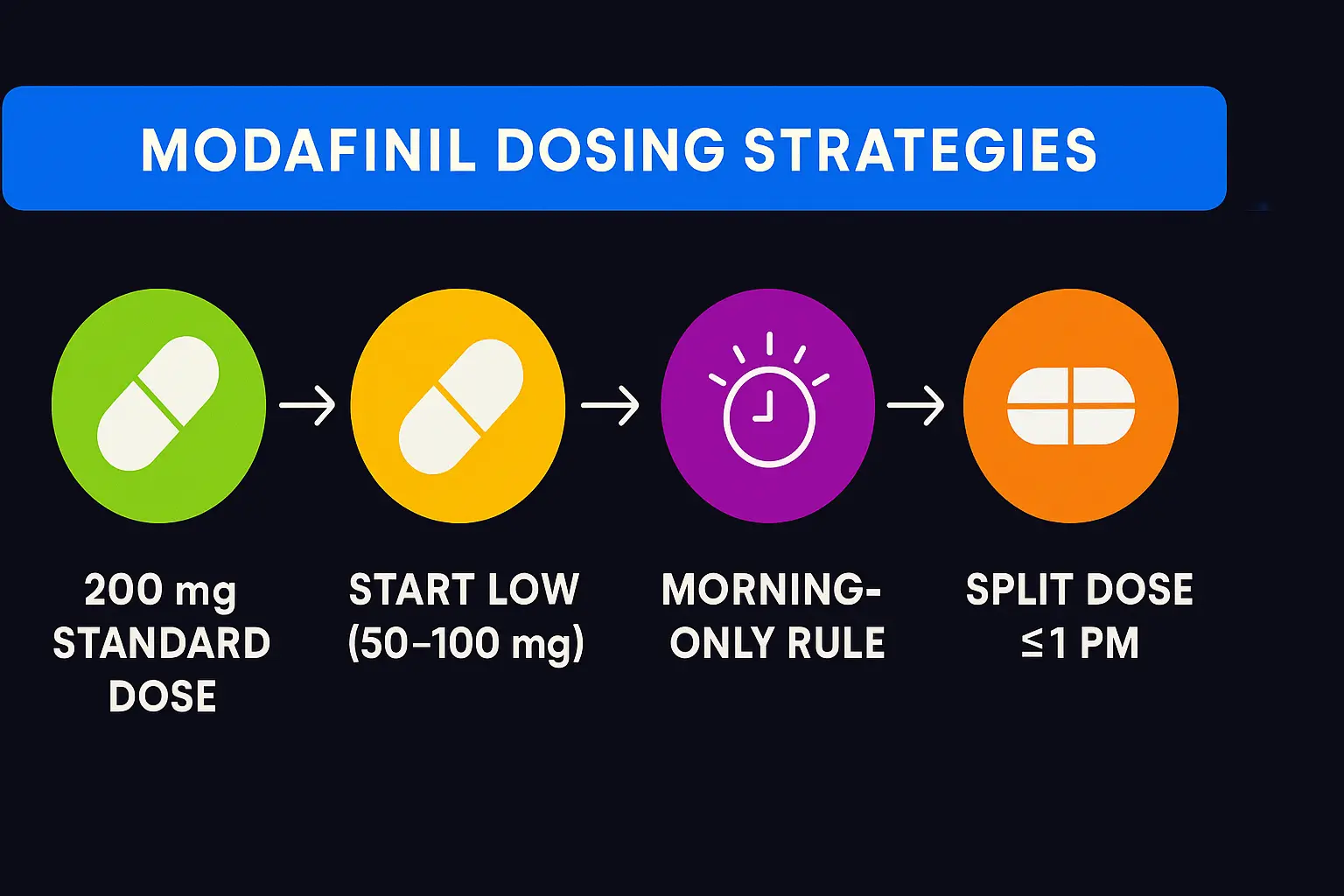
Using modafinil effectively largely comes down to when and how much you take. Because modafinil's effects last a long time, timing the dose correctly is crucial for benefiting from productivity boosts without ruining your sleep or causing afternoon crashes.
-
Standard Dose: The typical recommended dose for modafinil is 200 mg once daily35. This is the dose most often used in studies and by narcolepsy patients. Many off-label users also find 200 mg to be the sweet spot for maximum focus and wakefulness.
-
Start Low (100 mg or less): If you're new to modafinil, you might start with 100 mg (half a pill) to gauge your reaction. A number of users report that 100 mg provides a noticeable boost with even fewer side effects. In online communities, some even advocate "microdosing" modafinil – for example, taking 50 mg in the morning. One user on Reddit described 50 mg plus L-theanine as their "favorite combo" to gently kick-start the day36. Lower doses can be effective for those who are sensitive or just need a minor lift in alertness rather than the full stimulation of 200 mg.
-
Morning vs. Afternoon: Take modafinil early in the day, almost always. A common rule is don't take it after lunch (12 PM) if you plan to sleep that night. Modafinil can last 12+ hours in your system, so an afternoon dose might leave you lying in bed wide awake at 2 AM. A colleague once advised, "don't take them after midday," regarding modafinil37. For most, the ideal time is immediately upon waking (7–8 AM). This way, the drug peaks by late morning or early afternoon when you need peak performance, and then it gradually tapers off by late evening. If you have a unique schedule (say, you work night shifts), you'd adjust accordingly – e.g. take it before your "day" starts, whatever time that may be.
-
Splitting Doses: Some advanced users split their dose (e.g. 100 mg in the morning, 100 mg around noon). This can smooth out the effects over a longer period, theoretically extending the late-day coverage. However, be very careful: taking modafinil too late can absolutely interfere with nighttime sleep. If you split dose, that second dose should likely be no later than 12–1 PM. Generally, most people do fine with a single morning dose due to modafinil's long half-life. Splitting is not usually necessary unless you have a very long 16+ hour workday and you notice your focus fading in the evening.
-
Weekday Warrior or Daily? Many off-label users do not take modafinil every single day. Tolerance to modafinil is reported as low – it doesn't stop working if you use it regularly, and some people do use it daily long-term. But others prefer to save it for the most demanding days to avoid psychological dependence or simply to preserve its "wow" effect for when it's truly needed. For instance, a common strategy is using modafinil 2–3 times a week on heavy workload days, and abstaining on lighter days or weekends. One Hacker News commenter mentioned "I cycle it. I will take it max 2 days, then off for 5-7 days... It gives me all the benefits when I take it, without building tolerance"38. Another user alternated 3 days on armodafinil with 4 days on just caffeine/theanine as a break39. While not strictly necessary, these schedules ensure you stay in control of the habit and continue to appreciate the boost when you use it.
-
Empty Stomach for Faster Onset: Modafinil's absorption can be slightly delayed by food. Taking it on an empty stomach in the morning may lead to a quicker onset of effects (you might feel it kick in faster)40. Many users take it first thing after waking, with a glass of water, and then have breakfast 30–60 minutes later. If you have a sensitive stomach, a light breakfast is fine – just know that a heavy, fatty meal might slow the drug's absorption by an hour or two.
-
Hydration and Supplements: When dosing, also plan for hydration and possibly pairing with other helpers (more on "stacking" later). Some people take a B-complex vitamin or choline supplement with modafinil, thinking it might help prevent certain side effects like headaches. While evidence is anecdotal, ensuring you're not nutrient-deprived certainly doesn't hurt when using your brain intensively.
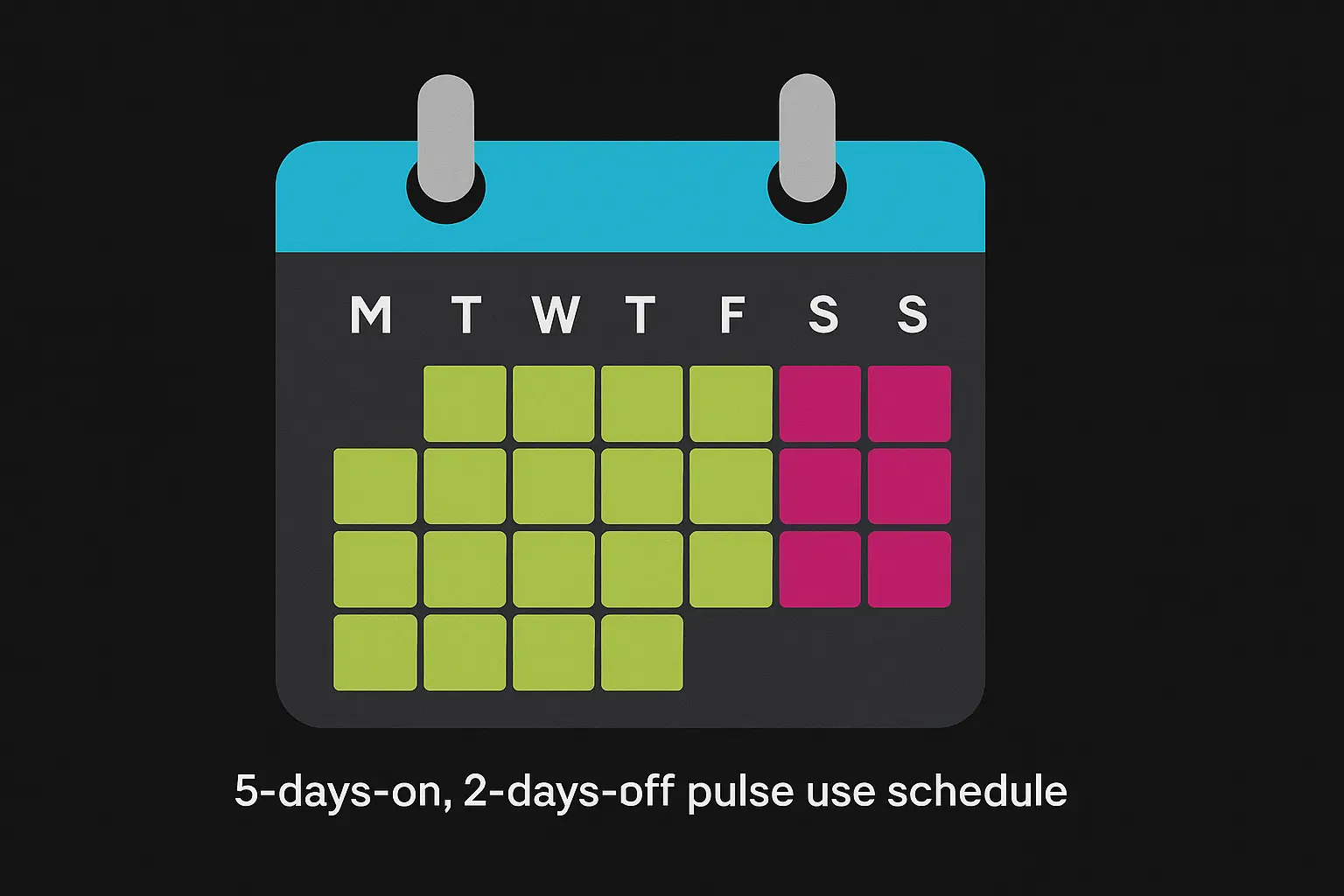
In summary, the golden rule is: dose early, and don't overshoot on amount. Most professionals find 100–200 mg in the morning gets the job done. Always listen to your body – if 200 mg makes you too anxious or wired, scale back. If 100 mg isn't cutting it, you can try 150 or 200 mg on another day. Because modafinil's effects last so long, there's no advantage to taking more later the same day; plan your dose once and make it count.
Onset, Duration, and Productivity Window
Once you've taken modafinil, how quickly can you expect to feel the effects, and how long will they last? Understanding the timeline will help you schedule your work for when you're in the "moda zone." Here's what a typical modafinil day looks like:
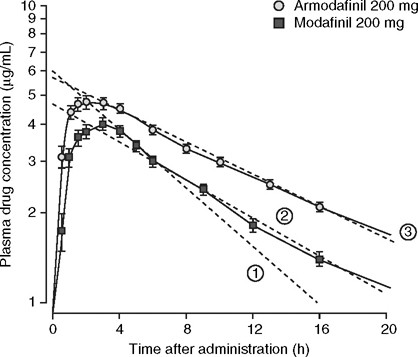
-
Onset (T+0.5–1 hour): Most people start to notice the first signs within 30 to 60 minutes of taking a pill. It may begin as a subtle feeling of alertness or an oddly clear-headed mood. By the one-hour mark, you'll likely realize you're fully awake. If you were groggy in the morning, that fog will dissipate. (Taking it on an empty stomach in the morning can push this onset toward the shorter end of that range.)
-
Peak Effects (T+2 to 4 hours): Modafinil reaches peak concentration in the blood about 2–4 hours after ingestion4142. Subjectively, you might find your focus and energy maximized roughly 3–4 hours in. For example, take modafinil at 7 AM and by 10 or 11 AM you're cruising through tasks with laser concentration. At this peak, any drowsiness is completely gone and most users experience a sense of sustained drive. Interestingly, you won't feel "high" – just intensely engaged in whatever you choose to work on.
-
Steady Productivity (T+4 to 12 hours): Unlike coffee or other stimulants that spike and then crash, modafinil maintains a relatively stable plateau of effect. From the late morning through afternoon, you should feel consistently alert. Many users report being able to work solidly for 10+ hours with minimal distractions. One survey found people on modafinil could extend their focus well into a long day – e.g. during crunch time, they might put in a full day's work, take a short break, then continue into the evening with sustained energy. Keep in mind, though, even if you don't feel fatigued, your brain is still accumulating tiredness in the background. It's wise to take brief breaks to stretch and rest your eyes during this period, as you might otherwise overwork without realizing it.
-
Onset (T+0.5–1 hour): Most people start to notice the first signs within 30 to 60 minutes of taking a pill. It may begin as a subtle feeling of alertness or an oddly clear-headed mood. By the one-hour mark, you'll likely realize you're fully awake. If you were groggy in the morning, that fog will dissipate. (Taking it on an empty stomach in the morning can push this onset toward the shorter end of that range.)
-
Peak Effects (T+2 to 4 hours): Modafinil reaches peak concentration in the blood about 2–4 hours after ingestion4142. Subjectively, you might find your focus and energy maximized roughly 3–4 hours in. For example, take modafinil at 7 AM and by 10 or 11 AM you're cruising through tasks with laser concentration. At this peak, any drowsiness is completely gone and most users experience a sense of sustained drive. Interestingly, you won't feel "high" – just intensely engaged in whatever you choose to work on.
-
Steady Productivity (T+4 to 12 hours): Unlike coffee or other stimulants that spike and then crash, modafinil maintains a relatively stable plateau of effect. From the late morning through afternoon, you should feel consistently alert. Many users report being able to work solidly for 10+ hours with minimal distractions. One survey found people on modafinil could extend their focus well into a long day – e.g. during crunch time, they might put in a full day's work, take a short break, then continue into the evening with sustained energy. Keep in mind, though, even if you don't feel fatigued, your brain is still accumulating tiredness in the background. It's wise to take brief breaks to stretch and rest your eyes during this period, as you might otherwise overwork without realizing it.
-
Tapering Off (T+12 to 15 hours): Modafinil's half-life is about 12–15 hours in healthy adults42, meaning by ~12 hours after your dose, the drug concentration in your body drops to around half its peak. You will likely notice by evening that the ultra-focused state has gently eased. Perhaps you'll feel a bit mentally weary or simply less driven to continue working. The decline is usually gradual – people often describe it not as a crash, but as a return to normalcy. For example, if you dosed at 7 AM, by 7 PM you may think "Ok, I can tell it's mostly worn off; I'm a bit tired now."
-
Residual Effect and Sleep (T+15h and beyond): Some people still feel a mild effect into the 14–16 hour mark (especially if they metabolize it slowly). By the time you're ready for bed (if you dosed in the morning), ideally modafinil's influence is minimal. However, a common issue is reduced sleepiness at bedtime – you might not feel as naturally ready to sleep as usual. It's not full insomnia per se (if timed correctly, many can sleep fine 16+ hours after a dose), but you may find you need to deliberately wind down. Good sleep hygiene (dim lights, no screens, maybe some calming tea) is key to counteract modafinil's lingering alertness. In cases where modafinil was taken too late, true insomnia can occur – essentially, you shifted your biological clock and you're just not able to fall asleep. This is why timing is everything with modafinil.
Overall, you can expect roughly 8–12 solid hours of heightened productivity from a single dose. The "productivity window" for most professionals is from mid-morning through early evening on the day of dosing. This is why modafinil is fantastic for sustained output during workdays or study marathons. Just remember that after that window, you should allow yourself to recover (and sleep) so you can be at baseline the next day or the day after.
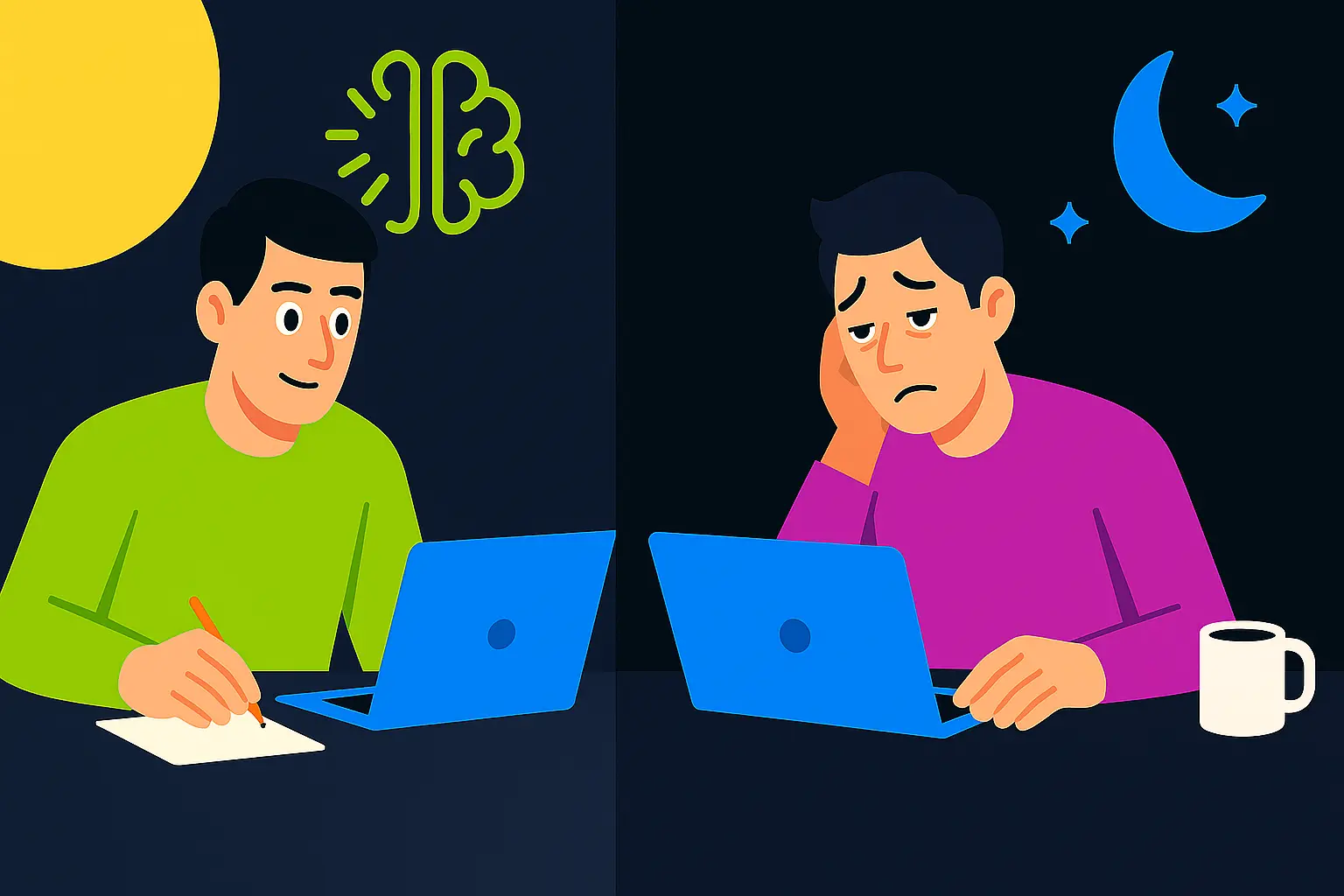
If you do need to stay awake into the night (say, an all-nighter for a critical deadline), modafinil can carry you through, but you have to plan differently. Some users in crunch mode will take one dose in the morning and a very small booster (e.g. 50–100 mg) in late afternoon to remain awake past midnight. This can be effective for one-off extreme cases, but be prepared for a messed up sleep schedule – and do not make a habit of it.
Stacking Modafinil with Caffeine, L-Theanine, and More
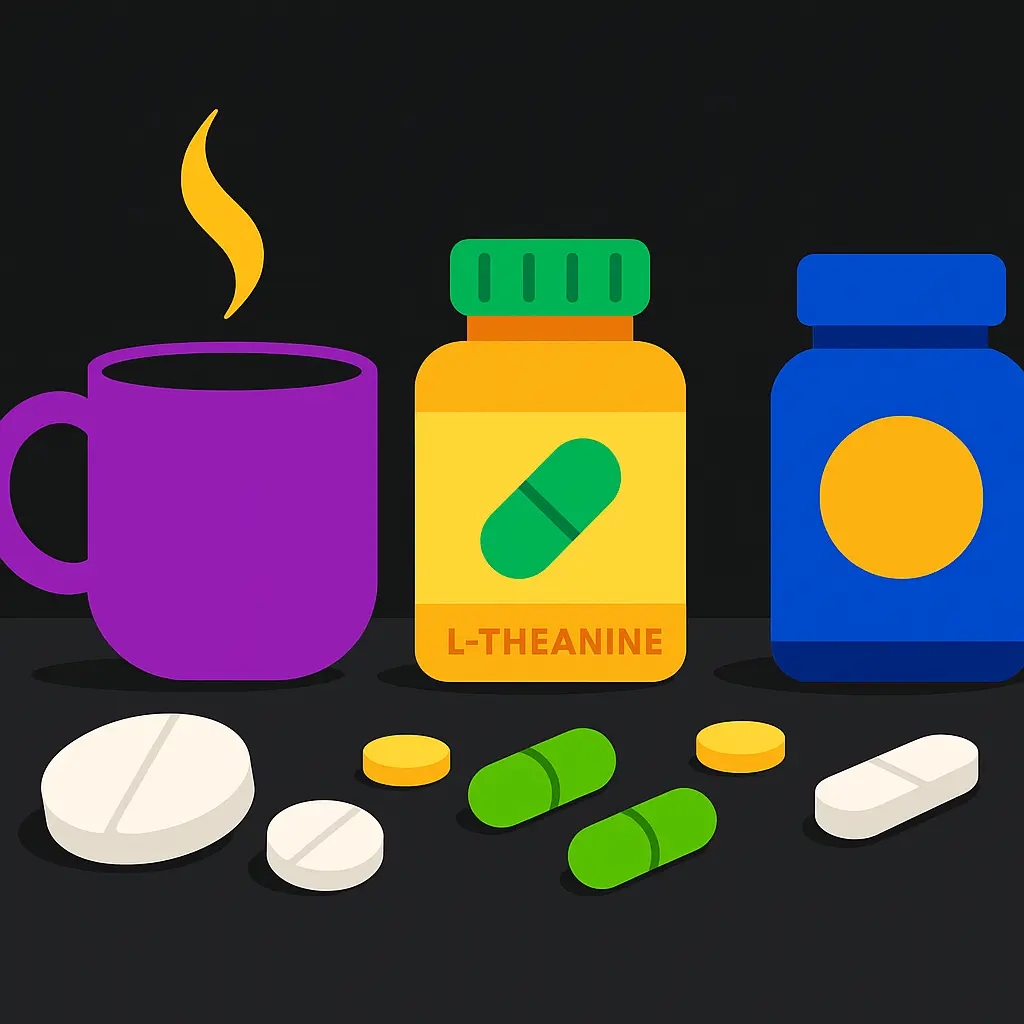
Many modafinil users experiment with "stacks" – combinations of supplements or other stimulants – to either enhance the positive effects or counteract side effects. Two of the most popular substances to stack with modafinil are caffeine and L-theanine. Let's explore how these pairings work:
-
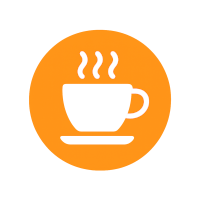 Modafinil + Caffeine:
Modafinil + Caffeine:Coffee and modafinil are a natural pairing for a lot of people. Since modafinil lacks the immediate jolt of a strong cup of coffee, some feel a cup or two of coffee in the morning complements it well. In fact, the original poster of a nootropics thread said they "still need caffeine in the morning to go with it"3. Caffeine can provide a quick boost while modafinil is still kicking in, and modafinil will then maintain alertness after caffeine might start fading. However, caution is advised: Both are stimulants in their own ways, and for some, the combo can overshoot the mark into jitteriness or anxiety. One user noted "go easy on the caffeine, combining them can be anxiety provoking"43. A safe approach is to start with your normal or even less-than-normal coffee intake and see how you feel. Many find they actually don't need as much caffeine when on modafinil – you might discover that one small morning coffee is enough and additional cups provide no extra benefit (or even make you feel edgy). There is no known dangerous interaction, but be mindful of blood pressure and hydration (both coffee and modafinil are diuretics, meaning they can dehydrate you – drink water).
-
 Modafinil + L-Theanine:
Modafinil + L-Theanine:L-theanine is an amino acid from tea leaves, famous for promoting relaxation without drowsiness. It's commonly stacked with caffeine to smooth out jitters. With modafinil, some users report L-theanine can take the edge off any anxiety or overstimulation, and possibly help sustain a calm focus. One Reddit user mentioned that despite skeptics, "L-theanine really seemed to potentiate the moda and make it more effective, in my experience."44 The combination likely helps by reducing any nervous energy modafinil might cause, resulting in a more collected feeling of focus. Doses often tried are 100–200 mg L-theanine alongside a modafinil tablet. In the earlier StackAdvice thread, the individual planned 100 mg modafinil + 200 mg L-theanine each morning as a way to gently jump-start productivity without the anxiety that pure stimulants gave him4546. Early reports from them and others suggest it's a worthwhile combo if you're prone to modafinil-induced tension.
-
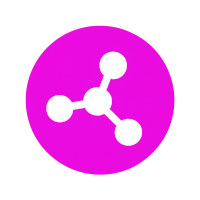 Modafinil + Other Nootropics:
Modafinil + Other Nootropics:Some dedicated biohackers combine modafinil with racetams (like piracetam, aniracetam) or choline supplements. Racetams are cognitive enhancers that may improve memory or clarity for some people. Stacking modafinil with a racetam + a choline source (alpha-GPC or CDP-choline) is discussed in nootropic circles. The evidence on racetams is mixed, but anecdotally, a subset of users feel it gives a synergistic cognitive boost (modafinil for wakefulness + piracetam for memory, for example). If you go this route, do your research on dosages – piracetam often requires grams of powder, and always include choline to ward off headaches. Start simple: It's generally recommended to first use modafinil by itself on a few occasions before introducing multiple variables. Ensure you tolerate each component individually.
-
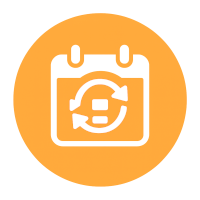 Alternate Stacks for "Off Days":
Alternate Stacks for "Off Days":Interestingly, some professionals plan a rotation of focus aids. For instance, one might use modafinil on high-pressure days, but on lighter days use a caffeine + L-theanine stack as a gentler pick-me-up (or use Adrafinil occasionally, a prodrug that converts to modafinil, though it's harder on the liver). The idea is to avoid daily reliance on any single substance. As noted earlier, one user alternated three days on armodafinil with four days on just caffeine/L-theanine to avoid tolerance39. This isn't necessary for everyone – many safely use modafinil daily – but it's an example of how people incorporate it into a broader cognitive enhancement regimen.
Finally, avoid combining modafinil with other strong stimulants or drugs without understanding the risks. Do not take modafinil with other prescription stimulants (like Adderall/Ritalin) unless explicitly advised by a physician – this can excessively strain your cardiovascular system. And be careful with alcohol; modafinil can mask the sedative effects of alcohol, meaning you might not feel drunk when you actually are. Moderation is key.
Managing Side Effects and Staying Healthy
Modafinil is generally well-tolerated, but like any drug that pushes your body beyond its normal limits, it can produce side effects. The good news is that most side effects are mild and manageable with a bit of self-care. Here we'll cover common side effects and strategies to mitigate them so you can use modafinil while staying healthy.
-
Headache:
The most frequently reported side effect. Modafinil headaches are often attributed to mild dehydration or electrolyte imbalance, or sometimes due to not eating enough. Prevention: Drink water regularly throughout the day – don't wait until you're thirsty. Also, ensure you eat meals on modafinil; even if you don't feel hungry, grab a light lunch. Some users find supplementing choline (e.g. Alpha-GPC) at the start of the day prevents headaches, especially if stacking with racetams. Treatment: If a headache sets in, it usually responds to over-the-counter pain relievers (Tylenol, ibuprofen) and a big glass of water or a sports drink. Persistent headaches may be a sign to lower your dose the next time.
-
Insomnia:
As discussed, taking modafinil too late in the day can wreak havoc on your sleep. Even with morning dosing, some people feel wired at bedtime. Prevention: Stick to morning dosing and cut off caffeine after early afternoon. Establish a relaxing pre-sleep routine – dim the lights, avoid screens or use blue-light filters, and consider gentle herbal sleep aids (chamomile tea, magnesium, or melatonin in small doses) if needed. One trick is to engage in a wind-down activity once you know modafinil is fading – e.g. read a book (a real book, not a tablet) for 30 minutes to signal your brain it's time to shift gears. If you still find yourself wide awake at midnight, you likely dosed too late or too high; adjust accordingly the next day.
-
Reduced Appetite:
Modafinil can suppress hunger in some people. On a busy modafinil-fueled day, you might suddenly realize you worked through lunch without noticing. While this might sound great for those looking to lose weight, it can lead to low-grade fatigue, headaches, or simply not getting enough nutrients. Prevention: Plan small, healthy snacks and a sensible lunch. Even if you don't feel hungry, try to eat something by early afternoon – a protein bar, some fruit and nuts, a light sandwich. Think of food as fuel for your brain's prolonged high performance. Staying well-nourished will keep you feeling stable and prevent crashes once the drug wears off.
-
Anxiety or Jitters:
A minority of users experience increased anxiety, heart racing, or irritability on modafinil. This can happen especially if you are prone to anxiety or if you've overdone the caffeine. Prevention: If you have an anxious disposition, start at a low dose (50–100 mg) and possibly add L-theanine to smooth things out. Avoid other stimulants. Some biohackers recommend meditation or breathing exercises on modafinil to channel the energy positively. One Reddit user in an anxiety thread reported that they halved their modafinil dose and found the anxiety disappeared while focus benefits remained. Management: If you do feel a bit edgy, take a short break. Walk around, do some light stretches or push-ups to burn off excess adrenaline. Remind yourself that it's just the drug's effect and focus on slow, deep breaths. The edgy phase often passes as you get absorbed in work (modafinil tends to let you tune out distractions, including internal worries, once you're in flow).
-
"Monomaniacal" Focus:
Interestingly, one long-term user noted a kind of hyper-focus side effect – becoming too fixated on work at the expense of everything else47. Some call this the "tunnel vision" or "Adderall-like lock-in" effect48. It's when you might polish a paragraph for an hour when a quick edit would do, or keep debugging a minor piece of code far beyond its importance. This perfectionist streak can be a double-edged sword: great for productivity if applied wisely, but potentially a time-waster if misdirected. Solution: Be aware of this tendency. Use tools like the Pomodoro technique (timed work sessions) to periodically check-in and ensure you're on the right task. Setting specific goals for what you want to accomplish during the modafinil session can help – e.g. "I will finish slides 1–10 of the presentation by 3 PM" – so you don't end up endlessly tweaking slide 5 because you're stuck in the zone. Essentially, stay mindful of your priorities; modafinil gives intense focus, but you must steer that focus to the most important things.
-
Dry Mouth & Thirst:
You may notice a dry mouth or just an unquenchable thirst, as some users describe49. Modafinil's stimulant effect can reduce saliva and, combined with increased respiration from alertness, leave you parched. Solution: Keep a water bottle at your desk and sip regularly. Some also like to chew sugar-free gum or mints to stimulate saliva (and as a bonus, it helps with focus). If plain water isn't doing it, try an electrolyte drink or add a pinch of salt to your water to improve hydration.
-
Other Possible Effects:
Some people experience mild nausea or stomach upset – usually having a bit of food with your dose can fix this. Others report dizziness or lightheadedness occasionally; ensure you're not dehydrated and consider lowering the dose if this happens often. Rarely, modafinil can cause allergic skin reactions (like rashes) – if you ever see signs of an allergic rash or hives, discontinue use and see a doctor, as this can precede a serious reaction (Stevens-Johnson syndrome, albeit extremely rare). Lastly, modafinil can cause insomnia-related irritability – if you skimp on sleep post-modafinil, the next day you might feel cranky or mentally cloudy as payback.
General Well-being: To safely integrate modafinil into a high-performance lifestyle, don't neglect basics: good nutrition, regular exercise, and sufficient sleep on average. Modafinil can make you feel invincible on short sleep for a day or two, but your body still needs rest and recovery. Long-term users advise keeping an eye on your blood pressure, as modafinil can raise it slightly in some individuals (as can coffee). Regular exercise is great for counteracting this and also helps you sleep better when the day is done.
One long-term daily user (10+ years) reported having no adverse health effects and even said he's in better shape because modafinil gave him the energy to work out consistently5051. That's an ideal scenario, and it underscores that modafinil doesn't have to be unhealthy if you use it responsibly. Pay attention to your body's signals, stay hydrated and nourished, and modafinil can truly be a relatively low-risk aid.
Long-Term Safety Considerations

A question many professionals have is: "Is it safe to use modafinil in the long run? Could I be harming myself by using this drug to boost my work performance?" It's wise to ask this. While modafinil is much safer and gentler than classical stimulants, long-term use considerations are still important, especially since using it for productivity (off-label) means we don't have decades of formal research on healthy users.
Here's what we know and what experienced users say about long-term modafinil use:
-
Low Risk of Addiction:
Modafinil is not considered addictive in the way amphetamines or opioids are. It doesn't typically cause cravings or compulsive use. In fact, some users note they can stop taking it without withdrawal – one person who had used it daily for years said "sometimes I'll forget to take it… I don't feel an urge to do anything about it"52. Research backs this up: modafinil has a low abuse potential and is classified Schedule IV (low dependency risk) in the US5310. That said, psychological dependence is possible – you might feel like you can't perform as well without it after relying on it for a long time. To avoid that, it's smart to take occasional days off and prove to yourself you can still function normally.
-
Tolerance:
Most people do not develop significant tolerance to modafinil's effects. It tends to work just as well after months of use as it did initially, according to user anecdotes and the lack of tolerance observed in clinical settings. Some individuals even report that the benefits accumulate – they learn how best to harness their focus over time. However, a small number have said they "feel less of a kick" after daily use for extended periods. In such cases, cycling the drug (as mentioned earlier, e.g. weekends off) can help keep the sensitivity. The PLOS survey data indicated frequent users did report more total effects (likely because they learned to leverage it) but not necessarily diminishing returns5455.
-
Physical Health Markers:
So far, there's no evidence that long-term modafinil (at therapeutic doses) causes organ damage or other serious health issues. It has been used in sleep disorder patients daily for years. One long-term user on HN shared that after nearly a decade on modafinil, routine health checkups showed no problems, and even their initially skeptical doctor eventually "came to accept that modafinil seems to be pretty safe" in that case51. Modafinil does not appear to significantly affect liver enzymes or blood parameters in most users. However, everyone is different – if you have pre-existing conditions (especially heart issues or high blood pressure), consult a doctor. Modafinil can cause slight increases in blood pressure and heart rate, so long-term use in someone with hypertension, for example, should be monitored.
-
Cognitive Effects Long-Term:
Will modafinil make you "smarter" long run? Probably not in terms of baseline IQ, but it might help build good work habits. Some students and professionals credit modafinil for helping them achieve things (learn a language, complete a project) due to sustained effort. Once off the drug, those skills or completed work remain. Conversely, a concern could be if one relies on modafinil for all productivity, they might not learn how to cope with fatigue or distraction naturally. It's a tool – ideally, you want to use it to support your growth, not become a crutch for every tough day. There's also the question of creativity: a few users feel modafinil made them a bit too linear in thinking when taken daily, possibly stifling outside-the-box creativity. Others do not find this at all – one user noted "I have no problems assimilating new concepts or doing abstract thinking while using the drug."56 It may depend on the person and task. If creativity is a big part of your work, observe how modafinil affects it for you (some alternate days for creative brainstorming vs detail-oriented work).
-
Mood and Psychiatric Considerations:
Modafinil has a mild mood-brightening effect for many, and even has been researched (off-label) in depression. But there are rare reports of it inducing anxiety, mania, or psychosis in susceptible individuals – usually at high doses or combined with sleep deprivation. For instance, a commenter mentioned "a few weeks of spiraling paranoid mania" after two years of use57 – it's unclear what other factors were involved, but such extreme reactions are exceptional. If you have bipolar disorder or a history of psychosis, you must be very cautious; any stimulant can potentially trigger episodes. For the average person, the risk is very low, but it underscores the importance of not escalating your dose beyond recommended levels. More isn't necessarily better and can stress your nervous system.
-
Unknowns:
Because modafinil use by healthy people is a relatively new phenomenon (couple of decades), we don't have full data on, say, 30+ years of continuous use. The longest we know is from those who started in the early 2000s when it became popular and are still using it. So far, their accounts are reassuring. Nonetheless, some users maintain a "healthy skepticism," saying things like they cycle off periodically to ensure there are no hidden long-term effects – a sort of check that everything still works fine without it58. This isn't a bad idea: taking a week off every few months as a "drug holiday" can reassure you that you're not developing any sort of dependency and that your cognitive abilities remain strong solo.
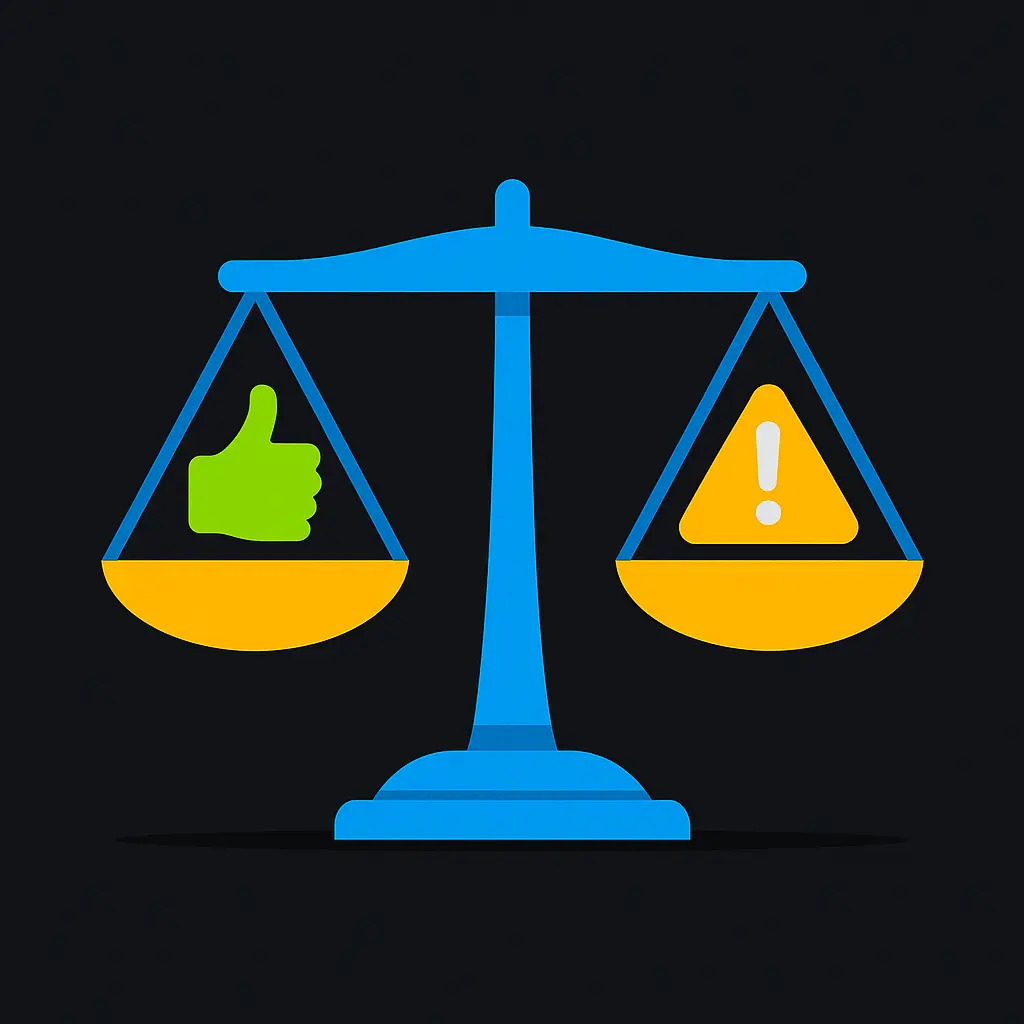
Bottom line: The consensus from recent studies and user experiences is that modafinil is relatively safe for long-term use when used at proper doses35. It does not carry the serious risks of many classical stimulants. Long-term modafinil users haven't reported organ damage or severe neurological issues, and some data even suggests modafinil might have neuroprotective effects in certain contexts. The main things to watch long-term are subtle: your sleep patterns, any shifts in mood or anxiety levels, and ensuring you're not neglecting your health (diet, exercise) because modafinil can mask fatigue. As with any long-term relationship – even with a drug – self-awareness is key. If you notice over time you're becoming too reliant or increasing dosage, step back and recalibrate. Used responsibly, modafinil can be a sustainable part of a high-performance lifestyle.
Using Modafinil During Crunch Periods
One of modafinil's most enticing applications is for crunch times – those periods when you have a critical deadline, marathon coding session, big exam or presentation looming, and you absolutely need to be at your best for an extended duration. Professionals in consulting, banking, tech, academia, and other high-pressure fields have turned to modafinil as a secret weapon during these intense bursts of work. Here's how to make the most of modafinil in crunch mode (and survive to tell the tale):
-
Strategic Dosing for Crunch:
Time your modafinil use such that its peak aligns with your most demanding work. If you plan a 14-hour work sprint, take modafinil at the start of it (morning, if it's a daytime sprint). For example, if you have a project due tomorrow and you know you'll be working late, you might dose at 8 AM to power through all day and into the late evening. Do not make the mistake of taking a fresh dose at 5 PM to push through the night – you'll succeed in staying up, but you might overshoot and still be wide awake the next morning when you're supposed to present! It's safer to take one dose in the morning and perhaps use caffeine in the late evening if you truly must extend a couple extra hours. In exceptional cases, some have taken a second 50–100 mg in mid-afternoon to sustain alertness past midnight, but this should be approached cautiously.
-
Staying Focused vs. Busy:
Modafinil will give you the energy to keep working, but you must ensure you're working on the right things. In crunch mode, it's easy to fall into the trap of productive procrastination (e.g. obsessively formatting a document instead of finishing the content). At the start of your modafinil-powered crunch, outline a plan: list your critical tasks and prioritize ruthlessly. Use the drug's focus boost to execute that plan. Many users report that modafinil helps eliminate procrastination – "I was barely able to [work before], but with modafinil… maybe better than ever", as one person quipped59. Just be mindful to direct your enhanced drive toward the finish line, not down a rabbit hole.
-
Managing Exhaustion:
Crunch periods often mean you're not sleeping much. Modafinil will mask the subjective feeling of exhaustion, but your body is still accruing a sleep debt. Plan recovery time after the crunch. For instance, if you use modafinil to get through 2 grueling days of finalizing a project, make sure you have the next evening or two free to catch up on sleep. Pushing multiple all-nighters in a row, even on modafinil, will eventually catch up with you (and can diminish cognitive returns – your performance will dip no matter what after a certain point of sleep loss). The French researcher Michel Jouvet, who helped develop modafinil, famously claimed it could keep an army on its feet for 3 days and nights with no major side effects60. That may be true in terms of not collapsing, but cognitively you'd still be impaired without sleep. So be a smart general: deploy modafinil for a day or two of heightened output, then allow a truce for rest.
-
Crunch Use vs. Daily Use:
Many professionals reserve modafinil primarily for crunch situations rather than daily routine. This is a reasonable approach: it ensures the drug remains extremely effective when you truly need it. If you find yourself only taking modafinil during end-of-quarter pushes or pre-launch marathons, that's fine. In fact, in one account from India, a medical student estimated that out of 160 students, about 50 were daily modafinil users but the rest only took it as a "desperate last resort during exam time."61 That shows how common it is to use modafinil temporarily to survive exams or deadlines. The key is to not rely on it to compensate for chronic poor time management – ideally, you use it to go above and beyond your normal capacity, not just to catch up from procrastination (though, let's be honest, we've all been there).
-
Presentations and Important Meetings:
If you have a critical presentation or meeting and you want to be especially sharp, modafinil can help with mental clarity and confidence. Users often report feeling more composed and less tired during long meetings or pitches. One note: test modafinil on a normal day before using it on a high-stakes day. You want to know how it affects you (and that it agrees with you) before adding the stress of a public speaking event, for example. Assuming you respond well, taking 100–200 mg a few hours before your presentation can ensure you're alert and on top of your thoughts. You'll be less likely to "blank out" from fatigue. Just remember to hydrate, as speaking a lot can already dry your mouth and modafinil might add to that – have water handy so you're not battling cottonmouth while talking.
-
Burning the Midnight Oil:
Modafinil is legendary for enabling safe all-nighters – meaning you won't feel like a zombie at 3 AM. If you have to code or write through the night, modafinil will keep you not just awake but fairly functional. But a piece of advice: still take short breaks to stretch and move around. The drug can make you so engrossed that you might not realize you've been hunched over your laptop for 10 straight hours. That can lead to neck/back pain or eye strain. Every few hours, step away for 5 minutes – your productivity won't suffer, and you'll maintain stamina.
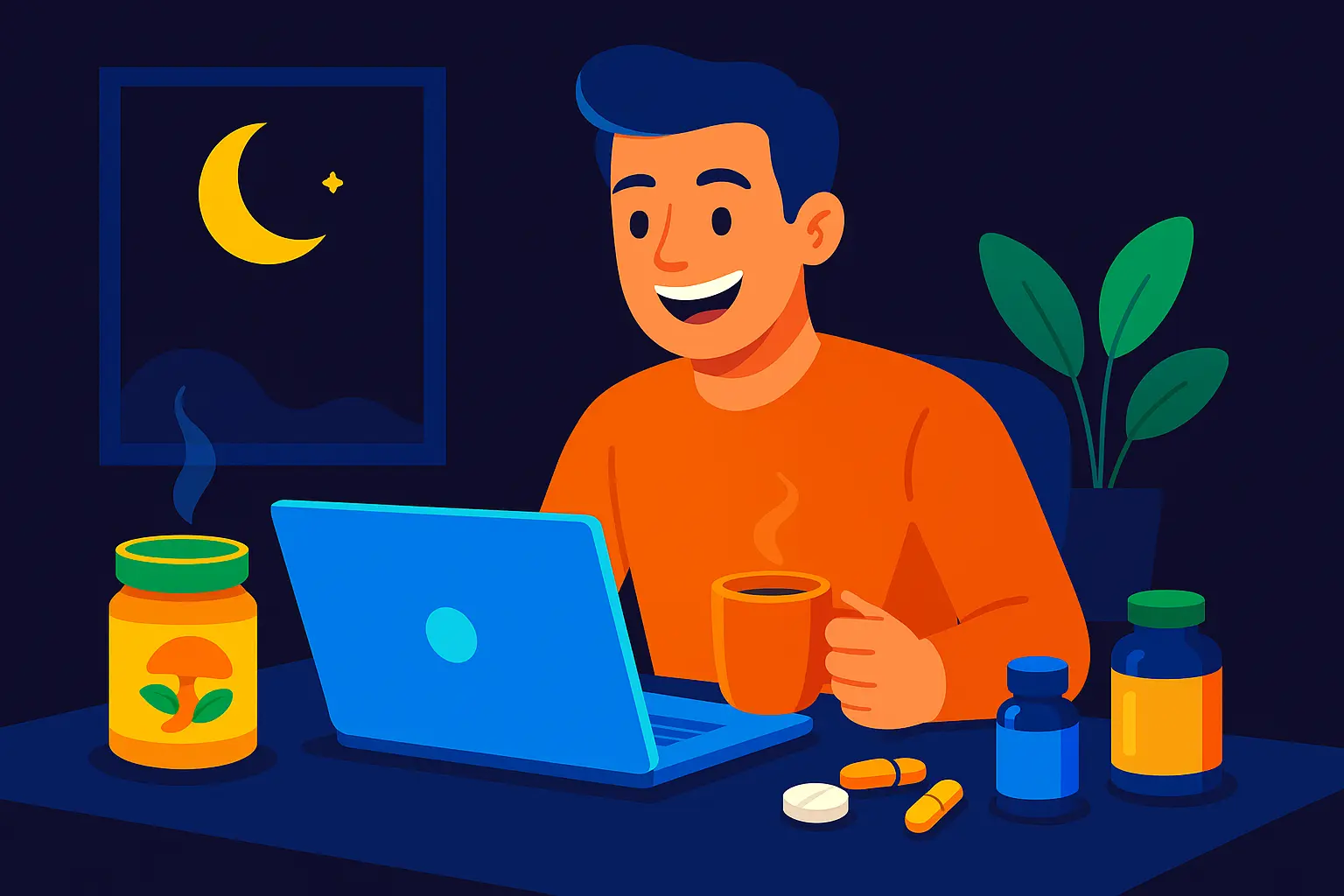
-
Know When to Stop:
In a crunch, it's tempting to push until the absolute last second. Modafinil might encourage that by delaying your crash. But try to wrap up your work while you're still under modafinil's aid, if possible, rather than after it's completely worn off. That way you finish strong rather than in a foggy come-down. If the deadline is, say, next morning, don't plan to work right up to that time. Aim to finish a bit early, and then use any remaining modafinil time to double-check or polish. Once it wears off, you might suddenly feel the cumulative exhaustion hit you like a wall.
Modafinil vs. Other Popular Enhancers: How It Stacks Up
How does modafinil compare to other common productivity boosters like Adderall or simple caffeine? Below is a side-by-side comparison to highlight the differences in effects, safety, and practical use. This can help you decide which tool is right for a given situation:
| Aspect | Modafinil (Provigil) | Adderall (Amphetamine) | Caffeine (Coffee/Tea) | Piracetam (Example Nootropic) |
|---|---|---|---|---|
| Legal Status | Rx only in most countries (Sched IV US)10. Not controlled in UK but Rx, OTC in few (e.g. MX)62. Obtained via prescription or online gray-market. | Strict Rx only (Sched II US – tightly controlled). Illegal without prescription. No off-label marketing allowed. | OTC everywhere. Found in beverages and tablets; no prescription needed. | Unscheduled supplement in most places. Sold OTC online. (Often marketed as a memory supplement.) |
| Primary Effects | Wakefulness, alertness; improved focus and sustained attention2. Enhances complex cognitive tasks (planning, decision-making)30. Little euphoria – "clear headed" stimulation. | Strong central stimulant; increases focus, euphoria/drive, and energy. Can drastically boost motivation and confidence. Often effective for ADHD symptoms. | Mild stimulant; increases alertness, slight mood lift. Helps shake off drowsiness. Can improve focus in short bursts, but limited potency. | Subtle cognitive enhancer. Claimed to improve memory, learning, verbal fluency (evidence mixed). Little immediate "stimulating" feel – more of a background nootropic effect over time. |
| Onset & Duration | Onset ~30-60 min; effects last 10-15 hours4142. One morning dose covers most of the day. No severe crash; gentle offset. | Onset 20-60 min (IR faster, XR slower); duration 4-6h (IR) or up to 10-12h (extended-release). Tends to peak and then crash as it wears off, especially IR formulation. | Onset ~15-30 min (fast, especially as coffee); duration 3-5 hours for a typical cup. Often a noticeable dip in energy ("crash") when it wears off, prompting another dose. | Onset days to weeks? (Acute effects subtle; some feel slight alertness in 1h, others none.) Often taken daily; any benefits accumulate with continued use. Duration is hard to quantify – not felt in the moment like stimulants. |
| Side Effect Profile | Mild for most. Possible headaches, insomnia, anxiety, elevated BP34. Low abuse potential1. Rare serious rash or psychiatric events. Generally well-tolerated at 100-200mg. | High side effects. Common: elevated heart rate/BP, insomnia, jitteriness, loss of appetite, anxiety. Can cause dependency; withdrawal can bring fatigue/depression. Long-term high-dose use can have cardiovascular and mental health risks. | Moderate side effects. Jitters, increased heart rate, GI upset, frequent urination, dehydration. Overuse causes anxiety or insomnia. Physically addictive (mild withdrawal like headaches, fatigue if habitual user stops suddenly). | Very low side effects. Generally considered safe; main issue can be headaches (often fixed by choline supplementation). Some report brain fog or irritability if dose is too high. No significant vital sign changes. |
| Addiction/Tolerance | Low risk of addiction. Little to no cravings; no classic withdrawal (aside from feeling normal tiredness return). Tolerance minimal – effects stay fairly consistent54. Psychological dependence possible if used daily as a crutch. | High addiction risk. Amphetamines release dopamine – can be habit-forming. Tolerance develops (doses may need to increase). Definite withdrawal (extreme fatigue, depression, sleepiness) if dependent and stopped. Classified Schedule II due to abuse potential. | Mild physical dependence. Daily caffeine users get withdrawal (headache, grogginess) if they stop suddenly. Tolerance builds quickly – you often need more coffee over time for the same effect. Not generally considered addictive in the behavioral sense, but habitual. | No known addiction. No cravings or withdrawal documented for racetams. You can stop anytime without physical effects. Tolerance is debated; some say continuous use leads to diminished effect, others "cycle" to avoid any potential tolerance. |
| Suitable Use Cases | Lengthy, mentally demanding work where alertness must be sustained (e.g. coding sprints, exam study, long shifts). Great for reducing impulsive distractions and fighting fatigue. Also useful for shift work disorder or jetlag adaptation. | Situations needing intense focus + motivation for shorter periods, especially if other methods fail (e.g. severe ADHD during work, all-night study with more "oomph" than modafinil). Not ideal for routine use due to side effects/addiction. Often used when extreme concentration or wakefulness is needed and willing to accept trade-offs. | Everyday pick-me-up or boost. Good for a short energy/focus boost – morning wake-up, tackling a brief task or meeting. Widely used due to convenience. However, not great for extended periods of concentration (you'll need multiple doses and may get jittery or crash). Best for mild fatigue or in combination with other strategies (like a power nap + coffee = "napuccino"). | Baseline cognitive support. People use piracetam (and similar) hoping to improve memory, clarity, or protect the brain, especially over long term. Suited for those looking for subtle improvements without stimulation – for instance, writers for verbal fluency, or aging individuals for memory. Not helpful for acute sleepiness; more of a gentle enhancer that might make your mind feel a bit "sharper" after weeks of use. |
As the table shows, modafinil occupies a sweet spot between traditional stimulants and casual aids. It provides strong wakefulness and focus like prescription stimulants do, but with far fewer side effects and a much lower risk of abuse1. Compared to caffeine, modafinil is dramatically longer-lasting and smoother – no mid-day crash, no need to dose repeatedly. Modafinil's effect is often described as "more productivity, less excitability." You won't get the jittery buzz of caffeine or the euphoric drive of Adderall, but you'll get a solid, stable enhancement of your alertness and mental endurance.
Some additional points to consider:
-
 Adderall vs. Modafinil:
Adderall vs. Modafinil:Adderall might make you feel "amped up" and intensely motivated in the short run, which modafinil usually doesn't (moda is more subtle). Adderall can also improve working memory and give a sense of hyperfocus, but often at the cost of a steeper rebound effect (you might feel pretty low when it wears off). Modafinil's milder pharmacology means it generally doesn't affect your mood or physiology as extremely. Many who have tried both say modafinil is better for a long, steady work session, whereas Adderall might be overkill unless you need that powerful push (and you accept the side effect profile). Also, legally, modafinil is easier to justify for off-label use – prescribing Adderall without an ADHD diagnosis is frowned upon, whereas some doctors are more willing to prescribe modafinil off-label for things like shift-work fatigue or cognitive symptoms, since it's seen as safer.
-
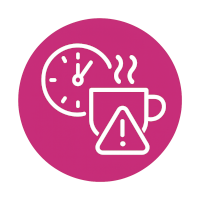 Caffeine's Ubiquity:
Caffeine's Ubiquity:We shouldn't underestimate caffeine – it's the world's favorite nootropic. Modafinil devotees often still love their coffee; they just don't need as much. Caffeine is great for a quick hit of alertness but requires re-dosing for an all-day effect, which can lead to jitteriness and disrupted sleep if you're not careful. Modafinil can basically replace your need for multiple coffees throughout the day. Interestingly, modafinil and caffeine together have a synergistic effect on alertness for some, but as noted, watch for over-stimulation.
-
 Nootropics like Piracetam:
Nootropics like Piracetam:These are in a different category – more about gradually enhancing cognitive function rather than brute forcing wakefulness. Some modafinil users also take nootropics to support memory or neuroprotection. If modafinil is the workhorse for immediate productivity, piracetam is like a dietary supplement for your brain that might improve your baseline over time. Just know that the evidence for many nootropics is not as robust as for modafinil or Adderall. If you're looking for tangible, immediate results, modafinil or caffeine will be more noticeable.
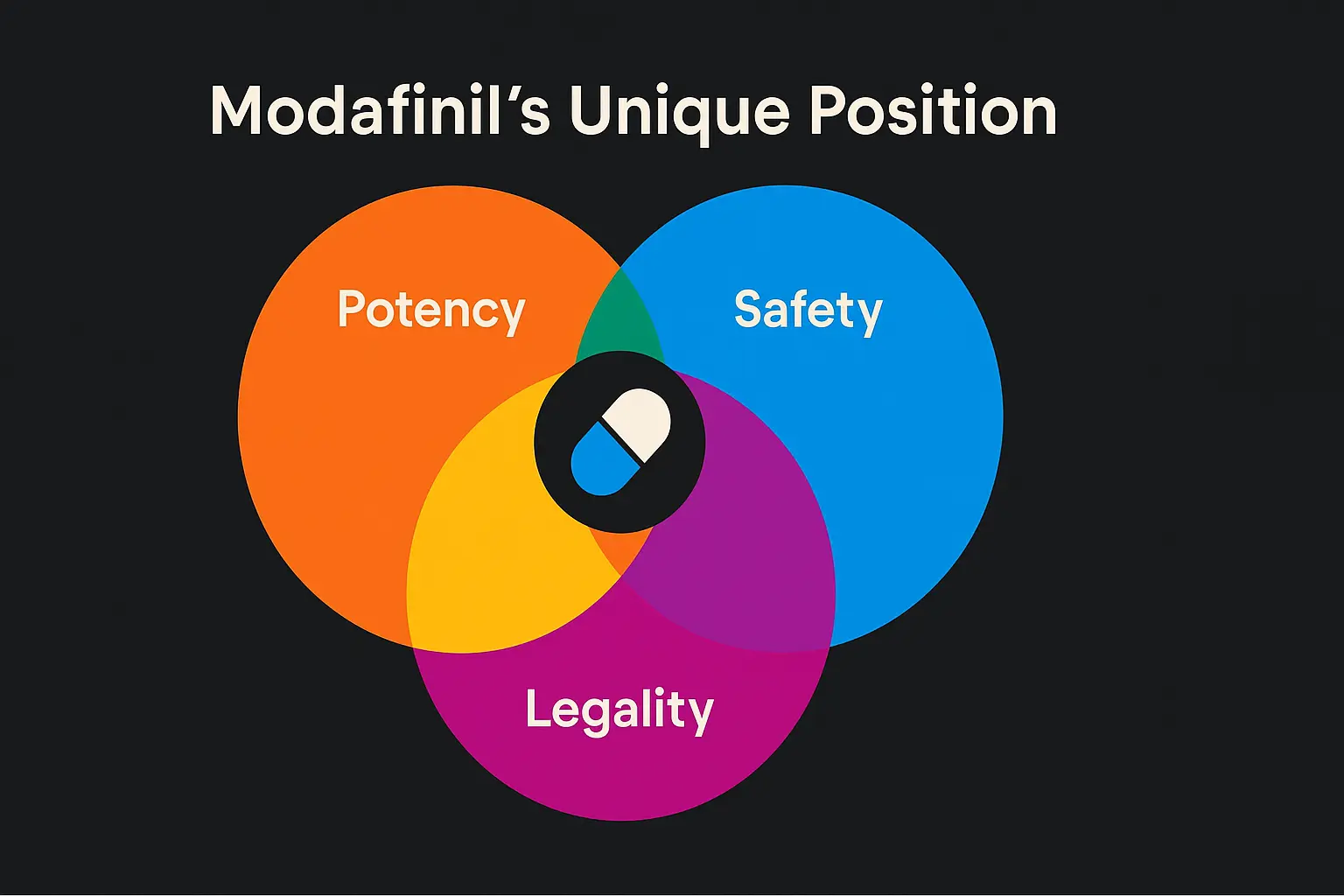
In short: Modafinil offers a unique balance: It's potent and long-lasting like prescription stimulants but lacks their worst downsides, and it's far more effective for sustained focus than a typical energy drink or nootropic supplement. This is why modafinil has earned nicknames like "#productivitypill" among some in Silicon Valley. Still, each tool has its place – some days a simple cup of coffee will suffice, and other times, when you truly need to be at peak performance for marathon sessions, modafinil is the superior choice.
Pros and Cons of Modafinil
To wrap up, let's summarize the key advantages and disadvantages of modafinil for off-label use. Consider this a quick reference "report card" for the drug:
| Prolonged Wakefulness & Alertness: Keeps you awake and mentally sharp for 12+ hours41 – great for long workdays or night shifts. | Potential Insomnia: Can interfere with sleep if taken too late (sleep hygiene is a must to wind down)37. |
| Enhanced Focus & Cognition: Improves concentration, especially on complex or tedious tasks30. Many users report significantly higher productivity and less procrastination. | Side Effects (Usually Mild): Headaches, dry mouth, or anxiety in some users34. Often manageable with hydration and dose adjustment, but present for a subset. |
| No Significant "High" or Crash: Provides a smooth, steady state of alertness without the jittery rush of caffeine or the crash when it wears off. You feel like an awake version of yourself, not "on drugs." | Reduced Appetite & Thirst: You might forget to eat or drink, which can lead to dehydration or low energy later. Requires discipline to maintain healthy intake. |
| Low Abuse Potential: Not chemically addictive in the traditional sense63. No strong cravings or dependency for most; easy to cycle or discontinue use. | Prescription/Legal Hurdles: Not legally available OTC in many countries (need Rx), and importing or buying online carries legal and quality risks1211. |
| Generally Safe Long-Term: Narcolepsy patients use it daily for years; studies and anecdotal evidence show no major long-term organ damage or health issues in healthy users51. Considered well-tolerated with proper use. | Unknown Long-Term Effects in Healthy Users: Despite no red flags so far, there's limited research on decades-long usage for enhancement. Subtle effects on creativity or personality are anecdotal (could make some overly work-focused)47. Some users take breaks to be cautious. |
| High Success/Satisfaction Rate: Surveys show users overwhelmingly feel modafinil benefits them – e.g. 92% would reuse, benefits rated much higher than risks49. It's often called a "life hack" for a reason. | Ethical/Dependency Concerns: Some worry about relying on a drug for performance or creating an uneven playing field. You must self-monitor to ensure you're using it as a tool, not a crutch. Also, in competitive scenarios (exams, sports), it may be considered cheating or banned. |

Final Thoughts

Modafinil has rightfully earned its place as a favorite productivity enhancer in the modern professional world. Used wisely, it can help you maintain laser-focus during critical projects, stay awake through punishing schedules, and generally get more done with less mental fatigue. It's like a secret ally on those days when there simply aren't enough hours – turning you into the kind of person who can create a presentation, analyze data, and blaze through emails, all without breaking a sweat.
That said, modafinil is not a magic bullet or a substitute for hard work and healthy habits. Think of it as an amplifier: it will amplify your work ethic, but also potentially amplify underlying issues (for example, if you're disorganized, modafinil might just have you working intensely on the wrong thing!). It's most effective when combined with good time management and clear goals. As one user insightfully put it, modafinil won't make you smart if you're not – it "improves wakefulness and decision making but does not make you any smarter."164 In other words, you still have to bring the talent and planning; modafinil brings the endurance.
Before you jump in, weigh the benefits for your situation and start low and slow. Maybe try it on a weekend or a low-stakes day to see how you react. If you decide to integrate modafinil into your routine, keep checking in with yourself. Make sure you still feel like you (just a well-rested, alert version). The goal is to enhance your life and work, not dominate it. Most professionals find that after using modafinil, they're more aware of how they spend their time – you might even learn to be productive without it, knowing what that focused state feels like.

In a world obsessed with performance, modafinil offers a tangible edge with relatively little downside. It's not "cheating" any more than coffee or a good night's sleep is – it's leveraging biochemistry to operate at full capacity. Still, maintain balance: enjoy your days off, get sleep whenever you can, and don't forget that sometimes mental downtime (daydreaming, unwinding) actually fuels creativity and long-term success.
With the knowledge from this guide, you're equipped to use modafinil in an informed, responsible way. Whether you're facing a startup crunch, studying for professional exams, or just navigating a marathon week at the office, modafinil could be the ally that helps you not just survive it, but excel. Stay safe, stay smart, and here's to unlocking new levels of productivity – hopefully with modafinil as a useful aide on your journey.
Global Legal Status and Availability

Modafinil's legal status varies widely across the globe, and understanding these differences is crucial before you consider obtaining or using it. In most countries modafinil is a prescription medication, approved for conditions like narcolepsy or shift-work sleep disorder – not for healthy individuals who just want to stay awake longer. Below is a quick overview of legality and availability in major markets:
-
United States: Modafinil (Provigil) is a Schedule IV controlled substance, legal only with a prescription10. Doctors can prescribe it off-label for conditions like ADHD or fatigue, but using it purely for enhancement is unofficial. Importing modafinil without a DEA license or prescription is illegal, though individuals are sometimes allowed to bring in a limited supply (≤50 doses) with proper declaration11. Despite these restrictions, many Americans quietly order generic modafinil from online pharmacies abroad. (It's an open secret that tech workers and students have been doing so for years.)
-
Canada: Not listed as a controlled drug, but prescription-only (Schedule F)12. You must have a doctor's prescription to obtain it, and importing it from abroad can result in seizures at the border without special permits12. Essentially, it's treated like any prescription medicine – legal to use if prescribed, but not available over-the-counter.
-
United Kingdom & EU: Throughout Europe, modafinil is generally prescription-only as a medicine for narcolepsy. In the UK, it's not a controlled substance under the Misuse of Drugs Act, so simply possessing modafinil is not a criminal offense – however, selling or distributing it without a prescription is illegal, and a pharmacy won't dispense it to you without a doctor's script13. Other EU countries are similar: for example, Sweden classifies it as a Schedule IV prescription drug (low abuse potential but Rx required)14, and Denmark/Finland allow use with a prescription but ban imports from outside the EU without authorization15. Some countries recently tightened rules: Romania in 2022 made unauthorized sale or import of modafinil a felony (punishable by prison) and even personal possession can lead to fines16. Meanwhile, Russia and China take a hardline stance – modafinil is a highly controlled psychotropic there, outright banned for personal use (not approved medically, and possession or import can lead to serious legal penalties)17 18.
-
India: India is one of the largest producers of generic modafinil. Brands like Modalert, Modvigil, and Waklert (armodafinil) are manufactured by Indian pharmaceutical companies and sold domestically. Technically, modafinil falls under prescription medicine regulations in India, but in practice it's often available over-the-counter at pharmacies or via Indian online drugstores. This ready availability, combined with low cost, has made India a common source for international buyers. In fact, multiple Indian companies (e.g. Sun Pharma's Ranbaxy division) have been producing modafinil since 200419, and it's sold under at least a dozen brand names in the Indian market19. Many global users order from Indian websites that ship modafinil pills discreetly – though one should be mindful of their own country's import laws when doing so.
-
Mexico: Modafinil is not a controlled substance in Mexico and can be bought in pharmacies without a prescription20. Brands like Modiodal are reportedly available OTC. This makes Mexico another source country where professionals (or travelers) sometimes obtain modafinil more easily. If you're traveling, however, remember that bringing those pills back home could violate your local laws unless you have a prescription.
-
Other Regions: Japan classifies modafinil as a Schedule I psychotropic, meaning it's strictly prescription-only and heavily regulated (imports are prohibited and there have been arrests for personal import attempts)21 22. Australia labels it Schedule 4 (Rx only medicine) – low abuse risk but you need a prescription, and importing it without permission is illegal23. South Africa requires a prescription as a Schedule V drug24. Always research your country's specific rules: the general theme is that having a legitimate prescription makes modafinil legal almost everywhere, whereas non-medical possession or purchasing online exists in a grey zone or is outright illegal in some jurisdictions.
Online Purchasing Tip: If you decide to obtain modafinil through online pharmacies, do so with caution. Quality can vary, and there's a risk of counterfeit products25. Most online vendors operate in a legal gray area – they often ship from countries where it's legal (like India) to customers abroad. While many professionals do order online, there's always a small risk your package could be seized by customs. Discretion and small orders are key. And of course, the safest and most legal route is to talk to a doctor – some physicians are open to prescribing modafinil off-label if you have a valid need (e.g. severe fatigue or shift work issues).
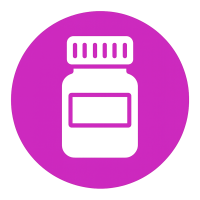 Brand Names & Formulations:
Brand Names & Formulations:
Modafinil is sold worldwide under brand names like Provigil (U.S.), Modalert/Modvigil (India), Alertec (Canada), Modiodal (France/Japan), and many others26. Armodafinil, a closely related drug (the single-enantiomer form), is known as Nuvigil in the U.S. and Waklert in generics. When researching or purchasing, be aware that these are essentially the same active ingredient, with armodafinil being a slightly modified version that can be dosed lower (150 mg armodafinil ≈ 200 mg modafinil).
Sources:
- 1 63 64 Drugs.com (2025). "Modafinil vs Adderall – What's the difference?" – compares effects, addiction potential (modafinil milder stimulant, less addictive).
https://www.drugs.com/medical-answers/modafinil-adderall-difference-3125139/ - 2 29 30 Scientific American (2016). "A Safe Drug to Boost Brainpower" – reports modafinil enhances higher-order cognition without serious side effects.
https://www.scientificamerican.com/article/a-safe-drug-to-boost-brainpower/ - 3 38 39 44 48 57 Reddit r/Nootropics – user experiences discussing focus, cycling usage, L-theanine combo, and various effects.
https://www.reddit.com/r/Nootropics/comments/34au9y/tried_a_bunch_of_things_then_tried_modafinil/ - 4 5 27 34 35 41 54 55 Teodorini, R.D. et al. (2020). "The off-prescription use of modafinil: An online survey of perceived risks and benefits." PLOS ONE, 15(2): e0227818.
https://journals.plos.org/plosone/article?id=10.1371/journal.pone.0227818 - 6 7 Frontiers in Psychology (2024). "The rising use of cognitive enhancement drugs during COVID-19" – survey in UK noting 42.1% increase in modafinil use.
https://www.frontiersin.org/journals/psychology/articles/10.3389/fpsyg.2024.1356496/full - 8 9 37 47 58 The Guardian (2013). "My life on brain enhancers" – anecdote on side effects, "monomaniacal" focus, survey showing 92% would use again, and timing advice.
https://www.theguardian.com/lifeandstyle/2013/may/03/brain-enhancing-drugs-mj-hyland - 10 11 12 13 14 15 16 17 18 20 21 22 23 24 26 28 40 42 53 62 65 Wikipedia: Modafinil – comprehensive information including legal status by country, military use, pharmacokinetics, and international regulations.
https://en.wikipedia.org/wiki/Modafinil - 19 60 61 Caravan Magazine (2019). "Modafinil's tightening hold over students" – usage among Indian medical students, Michel Jouvet research on sleep deprivation.
https://caravanmagazine.in/reportage/modafinil-tightening-hold-over-students - 25 ResearchGate (2019). "The availability and acquisition of modafinil on the internet" – online marketplace analysis.
https://www.researchgate.net/publication/335211965_The_availability_and_acquisition_of_modafinil_on_the_internet - 31 32 50 51 52 56 Hacker News – long-term user "throwaway12315" (2012) – 10+ years daily modafinil insights, safety profile, cognitive effects, and health monitoring.
https://news.ycombinator.com/item?id=3640777 - 33 PMC (2012). "Effects of modafinil on non-verbal cognition, task enjoyment and creative output" – task motivation studies.
https://pmc.ncbi.nlm.nih.gov/articles/PMC3485563/ - 36 43 45 46 Reddit r/StackAdvice – L-theanine and modafinil combination experiences, anxiety management, and dosing recommendations.
https://www.reddit.com/r/StackAdvice/comments/d553u4/recommendation_needed_l_theanine_modafinil/ - 49 Drugs.com (2025). "Modafinil: Smart Drug For Decision Fatigue Or Workaholic Crutch?" – thirst and dry mouth effects.
https://www.drugs.com/medical-answers/modafinil-smart-drug-decision-fatigue-workaholic-3573722/ - 59 Hacker News – productivity enhancement for complex technical work.
https://news.ycombinator.com/item?id=246773